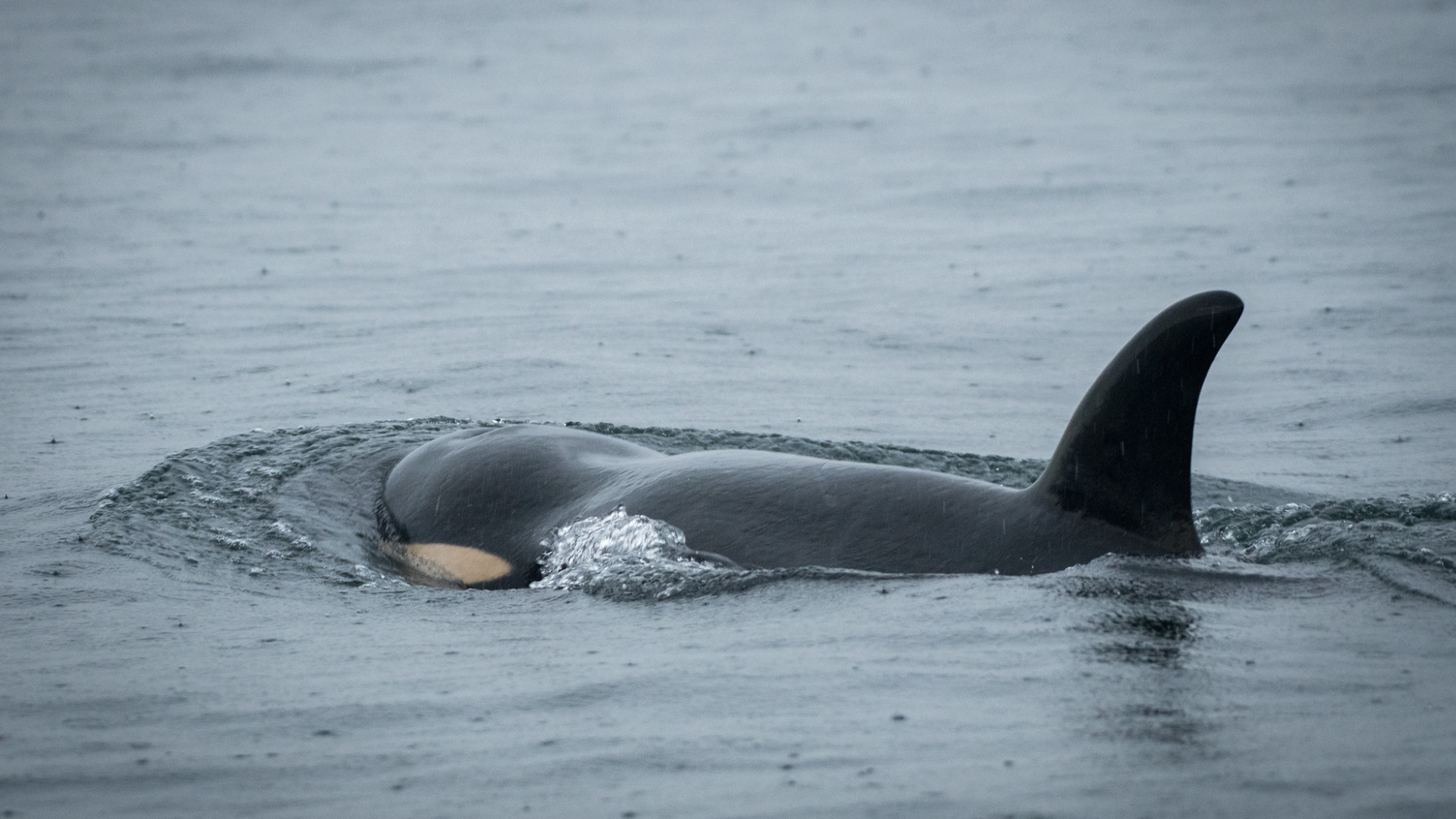Researchers who have been following the orca for years say its the first time anyone has seen a killer whale hunt a great white solo

Until this point, orcas have only been documented hunting great white sharks in groups. Photograph by Katy Foster / NOAA Fisheries
How many orcas does it take to kill a great white shark? Only one, apparently.
Dr. Alison Towner of Rhodes University and a team of marine biologists published a paper in African Journal of Marine Scientists on Friday detailing a novel discovery from June 18, 2023 off the coast of South Africa’s Mossel Bay. The team observed an adult orca named “Starboard” singlehandedly subdue and kill a great white shark, and then eat its liver — all in the space of about two minutes.
Scientists say this observation is significant because orcas typically hunt in groups. Starboard usually hunts with a companion named Port, and the the two went viral last year for killing 17 Broadnose sevengill sharks in a day and eating their livers. But this time, Starboard acted alone.
“Starboard was observed preying on a 2.5-meter (8.2 feet) juvenile white shark, later carrying the shark’s liver in its mouth past a boat,” Towner told Phys.org. “This sighting revealed evidence of solitary hunting by at least one killer whale, challenging conventional cooperative hunting behaviors known in the region.”
No one had documented orcas preying on great white sharks until April 2022, when a hobbyist drone operator flew over a group of five orcas — including Port and Starboard — nosing a mature great white shark carcass around near the surface of the water. A separate helicopter tour flew over the same group shortly thereafter and witnessed them preying on two more great whites. Orcas are partial to a shark’s liver, which is more nutrient-dense than other organs or muscle meat.
Watch Next: Killer Whales Try to Steal Angler’s Salmon
Whether a lone orca is capable of killing an adult great white shark remains to be seen. Either way, this research has farther-reaching impacts than just understanding the physical prowess of mature orcas. Marine biologists are also working to better understand how orca populations affect great white shark populations in a given ecosystem. Orcas are very capable of learning new hunting techniques and sharing those techniques with their young, and the impacts are starting to show in coastal South Africa’s shark population.
“Over two decades of annual visits to South Africa, I’ve observed the profound impact these killer whales have on the local white shark population,” paper co-author Dr. Primo Micarelli of the Shark Studies Center said. “Seeing Starboard carry a white shark’s liver past our vessel is unforgettable … Despite my awe for these predators, I’m increasingly concerned about the coastal marine ecology balance.”
This area of research is fast-evolving as researchers continue observing and documenting the actions of Starboard, Port, and other known orcas in the area. As a result, the long-term implications for great white shark numbers in Mossel Bay remain unknown. Some 40 to 60 sharks call the bay home.
“These are groundbreaking insights into the predatory behavior of this species,” Towner said. “Our findings significantly contribute to the global understanding of killer whale predation dynamics, enhancing knowledge of marine ecosystems and predator-prey relationships.”
